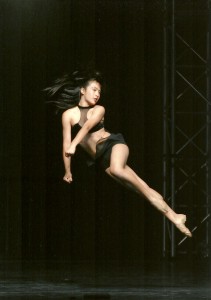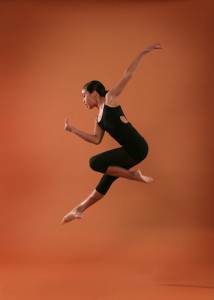
Today we have a guest post about music from Karen MacIver…
Many years ago my composition-for-film tutor Howard Goodall (the genius behind the themes for BBC British TV hits Blackadder, QI and Mr. Bean) once asked me what exactly makes music so important to the moving image. He was interested that I had come from the world of dance as a musician working in Ballet Companies. This seemingly simple question had a profound effect on me and I spent the rest of my time at film school – and my professional career – defining the answer.
The wonderful psychological impact music makes on us reaches far deeper than mere entertainment. Having returned to the world of Ballet, I now realize the most valuable asset a dance organisation can hope for, is to work with great music and great musicians. For here begins the symbiotic journey for the most elemental part of any dancers’ life – Class.
There is a small but growing army of inspirational musicians who have made it their life’s work embracing the world of music and the moving image. Mastering the art of improvising or recalling music perfectly takes time, passion and most of all comprehension of dancers’ needs during Class. Class is the fundamental ritual that ignites each working day, from beginner to ballet master. And so music nourishes not only the muscular requirements for the sporting qualities of a dancer, but also the emotional depth needed for choreographic demands.
If a musician ‘gets it wrong’ (and I use this term with fear and frustration) they are in peril of causing disruption to Class and at best will be artistically ignored for the oncoming hour. The very conundrum of what is needed to define a “great class” is the starting point of the Masters in Accompaniment for Dance course I am proud to be part of here in the UK.
So where do we find the ley lines connecting music and dance?
Well. There are two definitive structures that lie at the core of all good art and they are both found in the world of architecture. Proportion and tension-release.
Our delight in perfect proportion is embodied visually through classical structures dating back to the time-honored buildings of ancient Greece, balancing the principles of space (silence and stillness) versus material (movement and sound). Coco Chanel herself described her particular art in this simple statement “Fashion is architecture : it is a matter of proportion” and musician Laurie Anderson rather clumsily declared, “Writing about music is like dancing about architecture”. But we know what she was getting at!
And of course the ‘Mozart Effect’ reaches deeper than an educational context which states that our ability to learn and concentrate is refined in the proximity of hearing classical music. No, there are varying ballet structures given daily in class that not only seem to mirror the demands of musical phrasing but actually are the visual representation of great musical themes. The famous Elvira Madigan (Mozart’s piano concerto no.21*) theme embodies all that is perfect in proportionality and therefore complements so many of the dance exercises delivered in everyday Class. Understanding this gives the musician freedom to improvise around the perfect structures already created by the great masters of composition.
Understanding tension and release both physically and musically defines another equally important bridge connecting the two art forms. They are felt universally both in musical chord structures and in anatomical muscle memory. Architecturally it is felt as the invasion of space in the landscape, balanced with the satisfaction of creating man-made structures in apposition to nature.
If the musician thinks like a dancer, they will play music as a dancer – with breath and freedom balanced with strength. Thinking of music ‘anatomically’ – SKIN,MUSCLE,BONE – gives depth and understanding to the response of accompanying the dancer. Let me expand.
A child views her first years of taking Class in terms of skin only . She copies shape only in silhouette form with little comprehension of the underlying meaning of the movement. Similarly, a novice musician will copy the outward shape of movement when first confronted by the demands of ballet class, by making melodic contours that in some way mimic visual shape. Muscular flexibility in dance reflects musical harmony and skeletal shape and form corresponds vitally with musical form and shape.
The learning of an instrument is a slow process, just as the learning of ballet technique. Matching the two takes yet another stretch of time and imagination before they function together as one. And so, the musicians’ journey learning the textural changes and chordal tensions for class accompaniment is a long but ultimately fruitful one.
One more thought. If I think back to all I learned writing for film, there is one odd and unique aspect to film music that differs slightly from dance music. On the surface, both share the need for music’s psychological undercurrent which says so much more than the spoken word. Imagine the famed Underground train scene in Fatal Attraction when Glenn Close tells a handsome Michael Douglas that she truly loves him. Do you recall the music screaming “she’s mad!!!!” Probably not. Why? A good filmscore acts as an unnoticed dramatic colourwash to the action. Rightly so. That’s where its power lies.
However in dance, the presence of music is never ‘inferior’ to the visual impact of dance. It is the support and context in which movement comes alive. In return the music seems to acquire a unique luminosity that, once heard in context of dance, seems to sparkle just that little bit more.
In conclusion. A toast. Long may the marriage of music and dance stay in love!
*have a listen whilst you read the article!

Copyright Karen MacIver May 2012
www.balletmusicforclass.com
Karen lectures at Scottish Ballet/Royal Conservatoire of Scotland on the Postgraduate Masters Piano in Dance Course.









